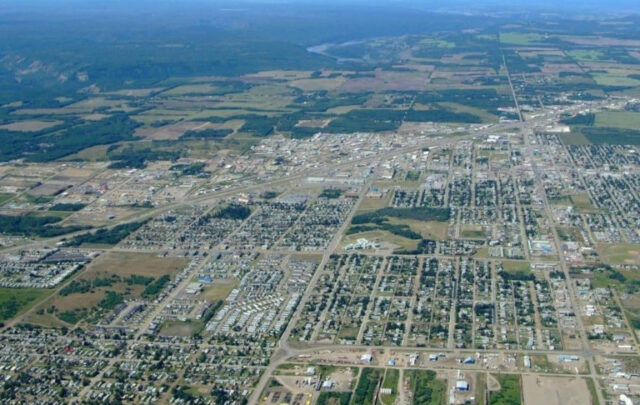Click on the headline (link) for the full text.
Many more articles are available through the Energy Bulletin homepage
After the Climate Breakthrough: What Do We Do Now?
Alan AtKisson, WorldChanging
Many people in our line of work* are feeling a bit giddy these days. Some, myself included, are talking in terms of a “sea change,” “tipping point,” “the wave is breaking” and the like. There is a kind of electricity in the air, a sense that many things previously considered impossibly difficult and infeasible are now just around the political-and-economic corner. As one friend put it, “For years I have felt like Sisyphus, pushing the boulder up the hill only to have it roll down again. For the first time, the boulder seems not only to be staying on top, but even to be rolling down the other side.”
And the reason for all this optimism? Climate change has hit the big time.
…The climate change agenda is now exactly where many of us were trying to put it: into the machinery of political and economic decision-making. Those of who play in that arena can perhaps have some influence; but we certainly cannot control the agenda. Nobody can. Our planet’s fate will now be determined by the sloppy process we call democracy, as national parliaments and boards of directors and international assemblies and city councils step up their deliberations about what to do. Now that climate change has secured a privileged position on the agenda of human affairs, nobody will ever have full control.
…That leaves another, tougher option as the only way forward for most of us who have dedicated careers to the vision of a more sustainable world: rolling up our sleeves, and working on scaling up implementation. Leadership and deliberative decision-making are best served by accurate analyses, clear proposals, good examples, case studies. We have many of these at the ready.
…Here’s the summary: In the next few years, people who have been working on sustainability, especially where it touches the climate-and-energy nexus, are going to be seriously tested — not by resistance to their ideas, but by the ever-increasing demand for them.
(7 Feb 2007)
World’s churches go green and rally to cause
Paul Majendie, Reuters
Dire warnings from top scientists that mankind is to blame for global warming set off alarm bells everywhere — but many of the world’s churches have already “gone green” in the race to save the planet.
For Christians, Jews and Muslims, the message is the same — mankind has “stewardship” of the earth which it has a duty to protect for future generations.
And environmentalists hailed churches for stepping up to the plate with a real sense of urgency.
(6 Feb 2007)
Book review: George Monbiot’s Heat
Gar Lipow, Gristmill
George Monbiot’s Heat: How to Stop the Planet from Burning is a brilliant, flawed, and deeply important look at what it will take to slow global warming below a catastrophic level.
Monbiot, one of the clearest and wittiest writers about politically difficult subjects today, tackles the problem of phasing out fossil fuels without illusions. Books on global warming normally expend most of their words to show how dangerous the problem is. Then, at the last, they point to a few partial solutions and say “more like that, please.” Or they simply give up on a comfortable life for everyone and turn to a kind of gloating Puritanism and say “You will have to suffer, but it will be good for you in the end.” In contrast, Monbiot takes a step-by-step look at how different sectors of our economy could run on drastically less carbon.
What about the flaws? One is that Monbiot puts excessive faith in a “carbon credit card” rationing scheme.
(8 Feb 2007)
The conspiracy of silence on climate change
Ashwin Gambhir, Counter Currents
… Unfortunately most parts of chapter four to ten are written mainly from an UK perspective. While it would be a near impossible task to chalk out a detailed emission reduction programme for the whole world, one would have liked at least one chapter on possible generic emission reduction strategies for the rest of the world. One would have also liked to read more on agriculture and the touchy topic of population.
The book lays down a path for the future backed by a clear rationale which makes good reading. The author neither minces his words nor does he omit inconvenient facts and references for the sake of making his arguments more convincing. While reality is hard to deal with, it is better dealt with head on than brushing it under the carpet and hoping for the best. This book is possibly the best one on the subject of action needed to combat climate change and helps one in quickly getting over the initial phases of anger, denial and frustration and leads to much needed action.
While his suggestions for the future definitely imply major emission reductions for all industrialized nations and many of the countries (like India and China) which today have no mandatory emission reductions, he does not comment on the present political impasse on this issue. As he himself acknowledges, “I have not demonstrated that it (necessary GHG emission reductions) is politically possible. There is a reason for this. It is not up to me to do so. It is up to you.”
So what should be our next step? Cut down consumption mercilessly and don’t wait in vain for techno-fixes, rather seriously start looking into lifestyle changes
(9 Feb 2007)





